WAIS (West Antarctica Ice Sheet) Divide sits on about two miles of flat ice making it an ideal location for ice core drilling in West Antarctica. The camp was founded 2005 for ice core drilling projects, however those projects finished up a few seasons ago. Nowadays WAIS serves as a launching point for various West Antarctic science missions ranging from weather stations, GPS/seismic stations, and future ice core site exploration. The camp is located at 79º 28ʼS, 112º 05ʼW and around 5960 ft above sea level. This location means the camp receives 24 hours of sunlight during the summer and is a bit colder than McMurdo. The beginning of the season temperatures were around -20 F, but averaged around 5 F during the height of summer. Temperatures even reached 31 F one day in early January breaking a high temperature record at WAIS and causing everything to become mushy. Since this was an El Nino year, we had erratic weather with heavy winds and blizzards often once or twice a week.
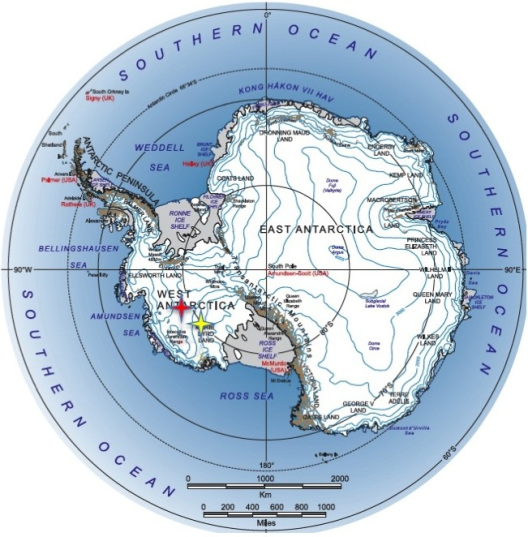
(The red dot is the approximate location of WAIS Divide and the yellow is Byrd Camp)
The camp layout follows a model that is ideal for deep field living. There is Tent City which is essentially the WAIS Divide campsite for everybody’s personal tents. The hard structures and larger tents that support work and science are along Main Street. These structures include the Kenn Borek Air pilot’s tent, medical tent, wash module and recreation tent, kitchen module and galley, communications tent, two science tents, a large mechanics tent, mechanics module, and generator module. Behind Main Street are the cargo lines that contain all the various supplies and cargo either being used in camp or waiting to be sent back to McMurdo. Further back are the winter berms which are manmade mounds of snow where all the supplies and cargo are placed on barrels to prevent them from getting buried over the winter. Alongside camp and the cargo lines is our ski-way that can support LC-130 aircraft up to around 18,000 pounds depending on the ski-way conditions.
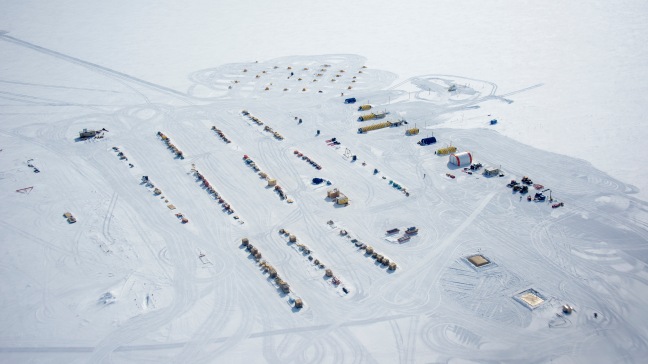
(Tent City is in the upper middle portion while Main St. is the line of buildings besides Tent City. The cargo lines and winter berms are located to the left of Main St. I’m not sure who took this photo)
The camp staff consisted of a camp supervisor, operations manager, communications manager, two weather observers, cargo master, fuel operator, mechanical foreman, mechanic, two heavy equipment operators, sue chef, chef assistant, kitchen stewart, and a physicians assistant. These positions were often interchangeable when needed. Two pilots and a mechanic from Kenn Borek Air, a private Canadian airline contracted out by the National Science Foundation, operated a Twin Otter from WAIS most of the season. On average the camp population averaged around 30 people at a given time, although I think we maxed out in the low 40s when a LC-130 flight crew was stranded at WAIS for a night.
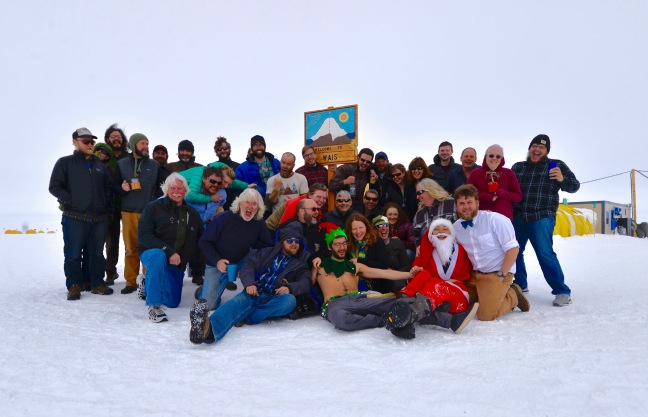
(WAIS Divide Christmas photo)
We had two scientists from the University of Washington stay as WAIS Divide for a week as they planned out a reconnaissance mission to the Pirrit Hills for future ice core drilling. We had four scientists with the DOE AWARE (ARM West Antarctic Radiation Experiment) install a container full of fancy weather gadgets that included basic radiometric, surface energy balance, and upper air equipment. Two remained throughout most of the season to maintain the container and launch radiosondes. Four scientist from the University of Wisconsin’s Automatic Weather Station program visited the camp throughout the season to conduct missions out to various sites in West Antarctica for weather station repairs and installations. One day I had the pleasure of flying around West Antarctica with them as we repaired a couple weather stations.
(Some scientist sciencing on the AWARE container. And me supporting science with a radiosonde launch)
Another major project out at WAIS Divide was the deconstruction of the old ice core drilling arch now buried beneath the snow. The site essentially is a huge warehouse with a large trench in the middle where the ice cores were originally drilled. In 2010, the ice core drilling team reached a core depth of 10925 ft, about 350 ft above the bedrock surface. Those projects finished shortly thereafter and it only took Antarctica five or so years to completely bury the arch. First bulldozers had to dig a pathway to the large metal doors to provide access to the building. Later carpenters arrived to gut all the wood and framing not essential for supporting the structure. Going inside the building provided the only complete darkness during my season in Antarctica. It also is a good candidate for most likely home of The Thing.
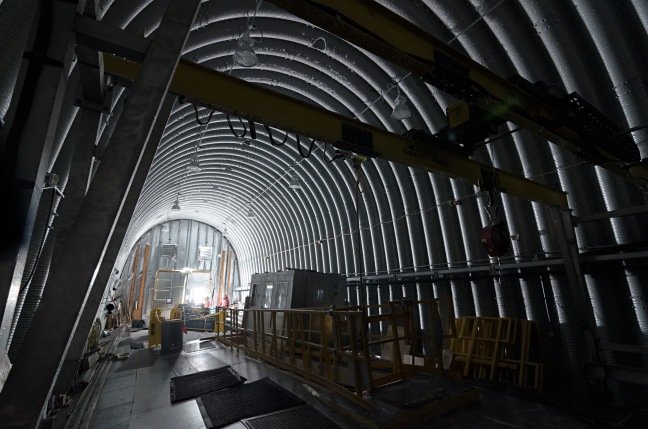
(A photo of the Arch taken by John Stone)
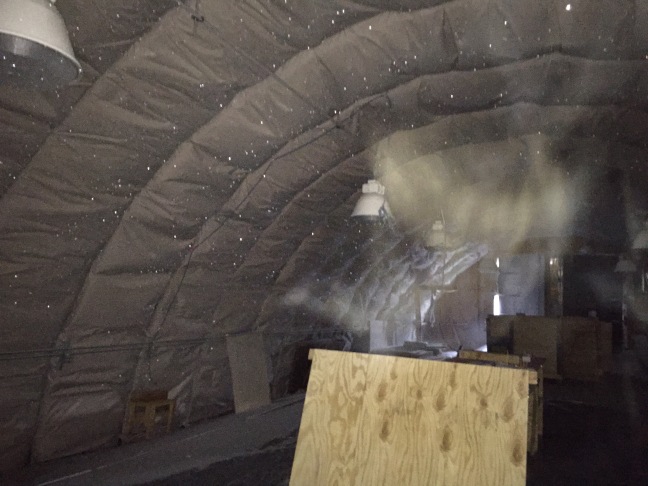
(I believe the ghostly spirit of The Thing)
The camp’s water is supplied from the very snow it sits on. Snow melters powered by the generator are capable of providing enough water for drinking, bathing, and cooking needs. All they require is a steady supply of snow collected through daily shoveling from our snow pits. To reduce contamination, the snow is mined upwind from camp and shoveled only using clean shovels. These steps ensure the water we drink is the cleanest water on the planet.
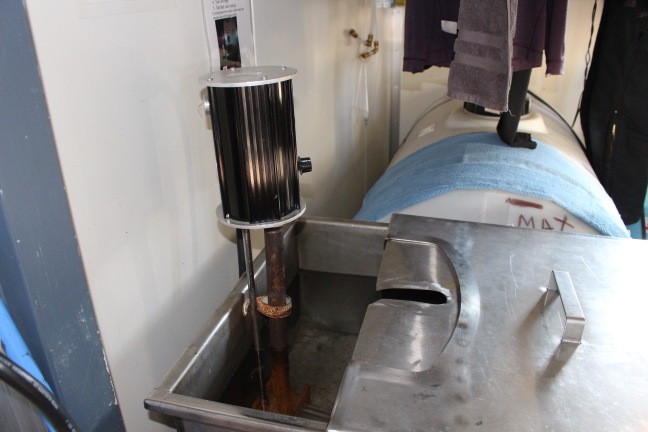
(Snow melter in the wash mod creating fresh Antarctica Spring water)
Heavy machinery is what keeps nature from devouring our camp with snow. Considering a good blizzard blows through about once a week, there is plenty of snow that constantly builds. At the camp we have two full time heavy equipment operators who can operate the larger bulldozer, light crane, forklift, and skid steer. A couple other people can operate the Tucker Sno-Cat that is often used to groom the ski-way and plow snow in town. There were about six snowmobiles that anybody could operate to ensure we continue the proud American tradition of not having to walk far. But honestly the snowmobiles are excellent for towing cargo around on sleds and quickly moving from one task to another. I’ve loaded everything on the snowmobiles from Air Force pallets, couches, and fuel drums.
(Rudolph the pirate snowmobile. A skid steer loading up a Herc. Me pretending to operate heavy machinery with Jim!)
A large supply of frozen food is stored in the freezer cave, a man-made subterranean cave guaranteed to keep all food frozen year round. While fresh foods were nearly nonexistent, the cave provides a large selection of quality meets and frozen veggies. Our chefs did an excellent job at providing the camp with tasty meals all season and providing exceptional meals during the holidays. They even used a large BBQ occasionally to provide us with Kansas style ribs because we are an American camp.
(The freezer cave. Some meat. And Chef Francis cooking up some ribs)
I could continue to provide an endless amount of detail, but this will do for now. If any WAIS Dividians read this, please let me know if everything sounds legit.









Great story! Very accurate! I spent some of the 08/09 season at WAIS when the drill was still active. I had to dig that thing out by hand with one other guy. Even then you could walk ontohe roof from any direction when we first got there after one winter. Love to see that Rudolph is still puttering along!
LikeLike